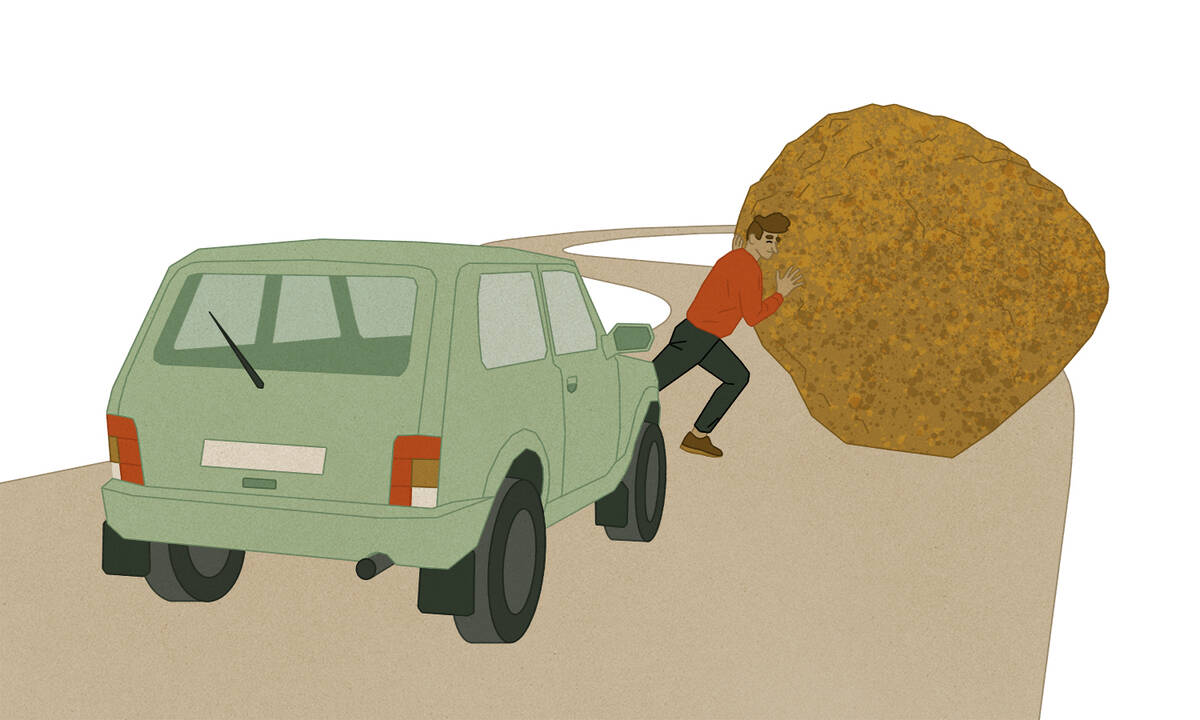Featured Faculty
Professor of Management & Organizations
Clinical Professor of Strategy; Director of Entrepreneurship Programs at Kellogg; Faculty Director of the Zell Fellows Program; Director of the Levy Institute for Entrepreneurial Practice

Lisa Röper
What makes a bullet fly toward its target?
The answer may seem easy: gunpowder. But there’s more to it than that. The gunpowder fuels the explosion that propels the bullet forward. But, in order to hit its target, the bullet needs to be aerodynamic to reduce the friction generated by wind resistance.
Kellogg professors Loran Nordgren and David Schonthal, see this as the perfect analogy for how innovations do, or do not, hit their targets. There’s the fuel of the new product or idea—the compelling features meant to draw people in—but there are also frictions to be considered—the sticking points that make people less likely to adopt something new.
Yet, they say, most innovators think only about fuel and ignore friction.
“We instinctively believe that the way to get people to say yes to our ideas is to add value, to use fuel,” explains Nordgren, a professor of management and organizations. “We often neglect the other side of the equation: the friction that opposes change. Ignoring frictions when pursuing ideas would be like building an airplane and caring only about engines and not aerodynamics.”
Nordgren and Schonthal are authors of the forthcoming book The Human Element, which lays out a framework for how to identify and then tackle the frictions that may be hindering adoption of your innovative ideas. They discussed their framework in a recent The Insightful Leader Live webinar.
There are four basic dimensions to a new idea—each of which has a corresponding friction. Innovators should consider all four of these frictions when launching something new. To explain them, the professors offered a case study of a home-building company.
The company built 1,000 homes for empty nesters who wanted to downsize. Lots of people came to tour the homes, with large percentages of visitors putting down five percent earnest money.
Great news, right? It sure seemed like a good idea with a compelling value proposition.
“And then something really weird happened,” explains Schonthal, a clinical professor of innovation and entrepreneurship. A large portion of the people who put money down “walked away from the deal, in some cases leaving their earnest money on the table.”
Why? Here’s where those four types of frictions come in.
“They just couldn’t figure out what to do with all their old stuff; in particular, what were they going to do with the dining room table?” Schonthal explains. “The dining-room table is a talisman. It is an artifact that embodies all of these good family memories.”
After identifying all of these frictions, the home builder made some changes. They offered help staging customers’ homes for sale, they included moving and storage services, and, to address the all-important issue of the dining-room table, they moved a wall to create a bigger room.
This increased the cost of the condos, but customers were happy to pay extra. The enlarged dining room alone increased sales by a significant amount.
The lesson: “Removing friction is often more powerful than increasing fuel,” Schonthal says.
The professors’ book offers techniques for digging into these four frictions to get beneath the surface and truly understand why your audience might be resistant to an innovative idea.
“You’re like a detective,” Nordgren says. “You’re analyzing the circumstances to understand the specific frictions operating against you. And once you identify those frictions, in many cases the solutions become self-evident.”
This approach works across cultures, they say. And it works for innovators of all types—whether you’re advocating for a new product, a departmental restructuring, or a social movement.
“The ideas here apply to change of really any form,” Schonthal says, “anyone who’s trying to bring something new into the world.”
Emily Stone is senior editor at Kellogg Insight.